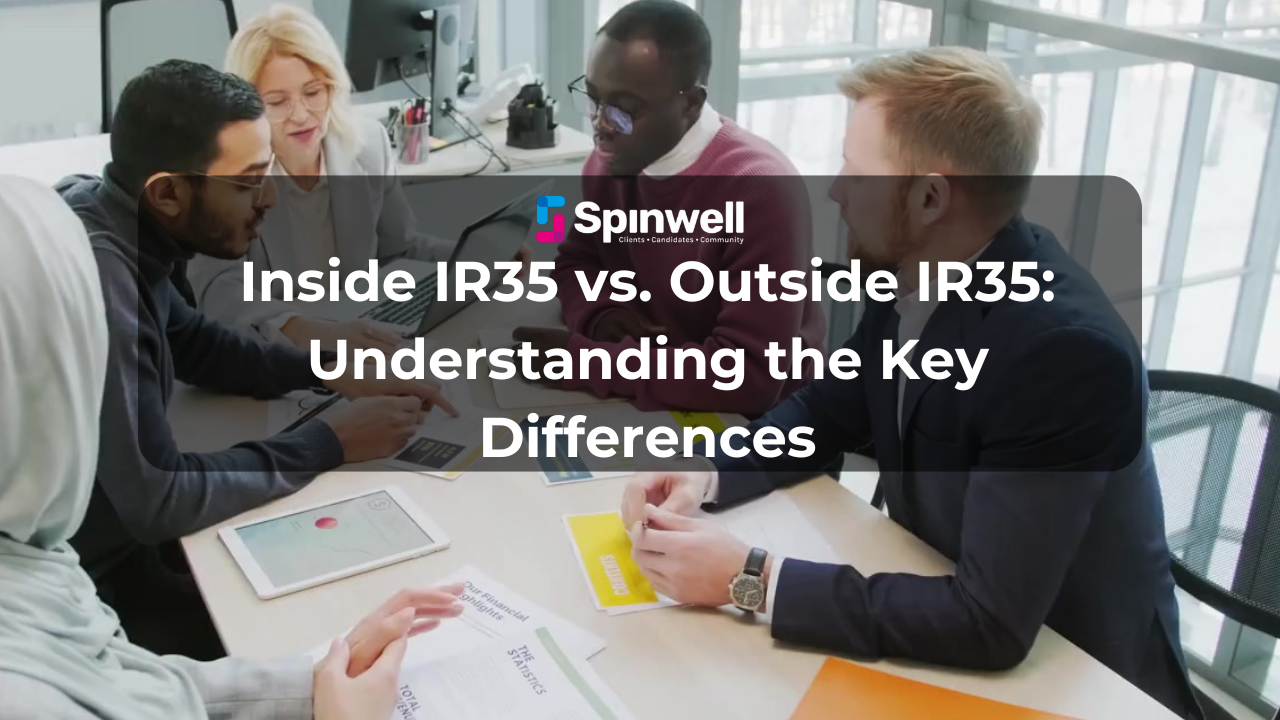
Inside IR35 vs. Outside IR35: Understanding the Key Differences

In the world of contracting, the terms “Inside IR35” and “Outside IR35” have become quite familiar. Understanding the difference between these two terms is crucial, especially for contractors and businesses operating in the UK.
In this blog, we will delve into the intricacies of Inside IR35 and Outside IR35, exploring their definitions, implications, and the factors that determine their classification.
What is IR35?
Before we dive into the differences, let’s clarify what IR35 actually is. IR35, also known as the Intermediaries Legislation, was introduced by the UK government to tackle tax avoidance by individuals who work through an intermediary, such as a limited company, but would otherwise be considered employees for tax purposes.
Inside IR35: Inside IR35 refers to a working arrangement where the contractor is deemed to be an employee for tax purposes. In other words, their work is deemed to be within the scope of IR35. When a contract falls inside IR35, the contractor is subject to the same tax and National Insurance contributions as a regular employee.
Key Indicators of Inside IR35:
Control and Supervision:
If the client exercises significant control and supervision over the contractor’s work, it suggests an inside IR35 arrangement.
Mutuality of Obligation:
When there is an ongoing obligation for the contractor to provide work and the client to pay for it, it points towards inside IR35.
Right of Substitution:
If the contractor cannot provide a substitute to carry out the work, this indicates an inside IR35 arrangement.
Financial Risk:
When the contractor does not bear significant financial risk, such as not being liable for project failures or not having to rectify mistakes at their own expense, it leans towards inside IR35.
Outside IR35: Outside IR35 refers to a working arrangement where the contractor is deemed to be operating as a genuine business in their own right, rather than an employee. In this case, the contractor enjoys certain tax advantages.
Key Indicators of Outside IR35:
Control and Autonomy:
When the contractor has control over how the work is carried out and is not overly supervised, it suggests an outside IR35 arrangement.
No Mutuality of Obligation:
If there is no obligation for the contractor to provide work or for the client to offer it, it points towards outside IR35.
Right of Substitution:
If the contractor has the freedom to provide a substitute to carry out the work, it indicates an outside IR35 arrangement.
Financial Risk:
Contractors assuming financial risk, like project failures or rectifying mistakes at their expense, indicate an outside IR35 arrangement.
Implications of IR35 Status: The implications of being classified as either inside IR35 or outside IR35 are significant for both contractors and businesses. For contractors inside IR35, they are subject to PAYE tax and National Insurance contributions, reducing their take-home pay. On the other hand, contractors operating outside IR35 have the flexibility to manage their finances more tax-efficiently.
Understanding the difference between Inside IR35 and Outside IR35 is essential for contractors and businesses alike. The classification can have a significant impact on tax obligations and financial arrangements. Contractors can make informed decisions on IR35 status, ensuring compliance and optimising tax positions by understanding key indicators. Likewise, businesses can accurately assess their engagements with contractors, ensuring compliance and minimising financial risks.
Get in touch with us
NK






